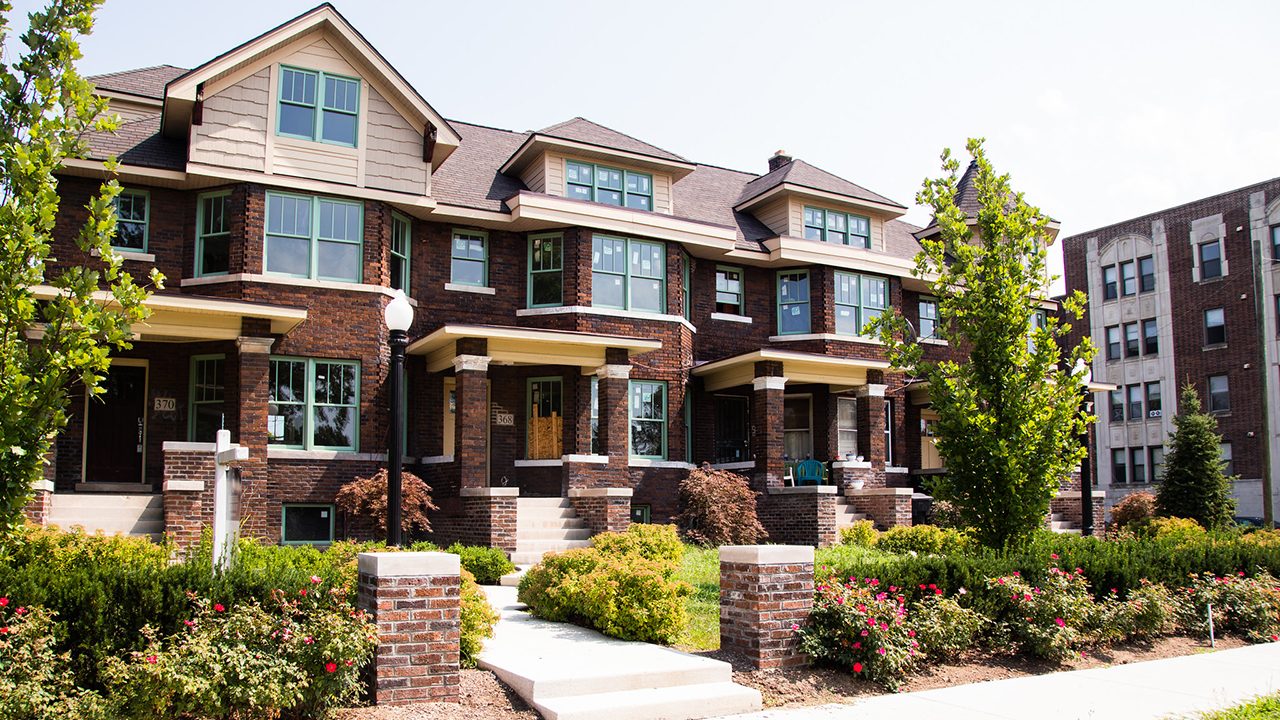MichMash: Tenants face subpar conditions in Detroit Housing Commission properties
“MichMash” host Cheyna Roth spoke with Outlier reporters Aaron Mondry and Rukiya Colvin about the conditions of DHC properties.

Homes across Detroit are continuing a six-year trend of significantly rising property values, with increases larger than most surrounding communities.
The Detroit Housing Commission is the largest provider of affordable housing in the city, owning 1,500 units and sharing an ownership stake of 1,900 units through partnerships with private investors. In an Outlier Media series being released this month, reporters are taking a closer look at the DHC. Host Cheyna Roth spoke with reporters Aaron Mondry and Rukiya Colvin about their article looking into the conditions of DHC properties.
Subscribe to MichMash on Apple Podcasts, Spotify, NPR.org or wherever you get your podcasts.
In this episode:
- An inspection report obtained by Outlier Media details maintenance problems across DHC properties including no hot water, plumbing problems, missing or out of order smoke detectors, broken windows, cockroaches, bed bugs and mice.
- There’s government programs to tap into private money for maintenance that the DHC is not using
- The DHC has a 78% occupancy rate and an 80,000 person waiting list. The average housing authority occupancy across the country is 95%.
Combined, Mondry and Colvin knocked on 100 units across the Diggs Homes, Brewster Homes, the Villages at Parkside and dozens of single-family homes. People who live in DHC units pay no more than 30% of their income on rent and utilities, Mondry said.
“[A]s we see a lot of funding coming in nowadays for infrastructure changes, and all of these other things, we have to think deeper of why we’re still not prioritizing housing, especially for more vulnerable folks when that’s essentially, you know, something that affects our quality of life and should be available to everyone as that’s an essential need as a human being,” Colvin said.
A third party hired by the DHC inspected 15 homes in 2021 and 13 failed. Outlier obtained the 2021 inspection report through a FOIA request which lists many issues throughout DHC properties including hot water heater problems, clogged or malfunctioning plumbing, missing or out of order smoke detectors, and windows that were broken or missing screens. Pest problems of bed bugs, mice, and cockroaches were also noted in the report.
“A couple of folks actually let us into their home and you know, there was one unit where there was a really bad smell in the basement,” Colvin said. “They were talking, they were telling us how you know they had water issues, flooding in their basement, like water will come into the basement because of an issue that they have been coming to the housing commission about for months at this point, and it still wasn’t addressed.”
The DHC board of commissioners attributed problems to underfunding, a decline in rent collection during the pandemic and staff turnover, according to Outlier.
“[I]t’s true, there is not enough money to maintain these properties. They don’t generate enough income. They don’t get enough grants from the federal government. And these are very old buildings in most cases,” Mondry said. “But I should add, there are alternative options available that would allow them to unlock funding that the Housing Commission has not taken full advantage of.”
Public housing authorities across the country utilize rental assistance demonstration, a program that allows housing authorities to use private investments to improve housing and address deferred maintenance, according to HUD. With RAD, properties change to a Section 8 platform allowing the housing authority to enter into long-term contracts with a private investor to improve facilities.
“And that allows you to unlock entirely new sources of funding. And some public housing authorities have converted their entire portfolio to [RAD],” Mondry said. “The [Detroit] Housing Commission has yet to convert a single property to RAD, so they are well behind the eight ball here. And that’s a big problem. And as you can see, it’s costing them time and money. And in the meantime, residents just have to wait in these really subpar homes that they’re living in.”
HUD requires a 96% occupancy for housing authorities, although the average is 95%, Mondry said. The DHC’s occupancy rate is 78%. There’s currently 80,000 people on DHC’s waitlist and Chief Executive Officer Sandra Henriquez said there isn’t an excuse for the low occupancy.
“[T]he most surprising thing to us was how many [DHC properties] were vacant, either boarded up or abandoned and have broken windows or had fire damage,” Mondry said.
Funding for affordable housing is a national issue, Colvin said, but it’s not an excuse for the DHC’s decades-long maintenance problems.
“It doesn’t seem like there’s a real sense of urgency to really address the issue,” Colvin said. “And just overall, it’s disheartening the way that, rather locally or nationally, decision makers treat both low income housing tenants and also unhoused people.”
Read Outlier Media’s complete series on the DHC here.
Related posts and reporting:
- Detroit Today: How Detroit’s ‘Fake Landlord’ Scam Is Forcing People Out of Their Homes
- Activists want the DIA to spend its $300 million on a ‘world class experience’
- Detroit Documenters
Trusted, accurate, up-to-date.
WDET strives to make our journalism accessible to everyone. As a public media institution, we maintain our journalistic integrity through independent support from readers like you. If you value WDET as your source of news, music and conversation, please make a gift today.

